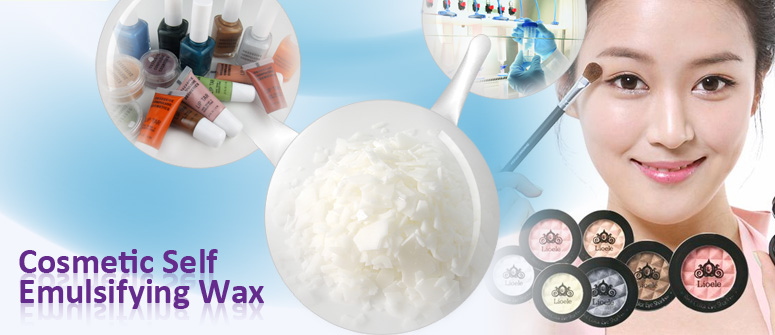 Menu
Menu
Application of Emulsifying Wax or Emulsifiers in Cosmetics
An emulsifier helps create a blend of water and oil. The emulsifier can either be oil-in-water (O/W) or water-in-oil (W/O). As per the chemical properties of water and oil they will never mix; however when emulsifier comes into the picture, it is possible to use it as a binding agent to mix the two and make toners, lotions moisturizers, cosmetics, etc. There are several types of emulsifiers, thus it is important to find the right one.
Emulsifying wax is a mix of either vegetable wax or petroleum based wax and a detergent like sodium dodecyl sulfate or polysorbates. The mix creates a smooth emulsion in the form of a white waxy solid and is referred to as emulsifying wax.
This has several applications in cosmetic products for skincare and hair care as explained in this article along with the various factors to consider when selecting an emulsifier.

Emulsifiers in cosmetics
The creams and lotions range from heavy to light cream and contain cosmetic wax:
- Heavy Cream: The heavy cream is what we call a cleansing cream and is meant to help remove make-up hence has a very high oil content. This type of cream is not useful as general moisturizing cream since it is in contact with the skin for a long period of time, is slowly absorbed which means it will give the skin an oily touch. This type of cream is often referred to as night cream and cold cream and it has a good skin softening ability. This type of cream will usually be in a jar due to its thickness.
- Light Cream: The light cream is what is often useful as a face, hand and body cream. This has a higher water content, is loaded with emollient and is referred to as a moisturizing cream. This will be absorbed by the skin very quickly. It can be available in many different textures and is usually packed in jar.
- Lotion: Lotion is the other type of cosmetic product with an even higher moisture content which makes it easier to dispense from a bottle. A lotion is also meant for the face, hands and body. It is also highly viscous, easy and more easy to apply. It can also be a light moisturizer or sun screen that is suitable for applying all over the body.
How to select the an Emulsifier
- Natural or Synthetic: The first factor to consider when selecting an emulsifier is to decide on whether to opt for natural or synthetic emulsifier. There are several natural emulsifiers, cetearyl olivate is one of them from natural olive fruit or olive oil. The synthetic emulsifiers include derivatives of PEG (Polyethlene Gloycol), PPG (Polypropylene Glycol).
- Acceptance issue: There are many types of emulsifiers which includes natural, organic, synthetic and not all types of emulsifiers are fine for everyone. For example, it can be vegan, halal, or kosher as well which some people may object against.
- Certified: Some of the emulsifiers may be organically certified while others may not be certified at all. The fact is that not all the natural emulsifiers are certified. The main problem suppliers face with certification is the high cost. Certification may be necessary if the end product is a certified product like a cosmetic commercially available.
- Palm Oil: An emulsifier does not necessarily need to be from palm oil however if it is the product may or may not contain 'palm' as the list of ingredients. The only way to be certain is to consult the manufacturers.
- Stabilizer: At time emulsifiers may need a co-emulsifier or a stabilizer for certain systems. This is generally necessary when working with alcohol or when trying to achieve a certain level of viscosity. Thus, the viscosity of the emulsifier depends a great deal on the requirements of the system and if it requires a synthetic stabilizer or a natural formulation.
- Viscosity Range: The end product dictates the viscosity of the emulsifier. For example, if the product is a thick night cream, a low viscosity separable and light emulsion is necessary.
The other factors to consider for emulsifying wax are the electrical charge, pH range, application dosage, shear tolerance, manufacturing procedure, electrolyte tolerance and alcohol tolerance.
